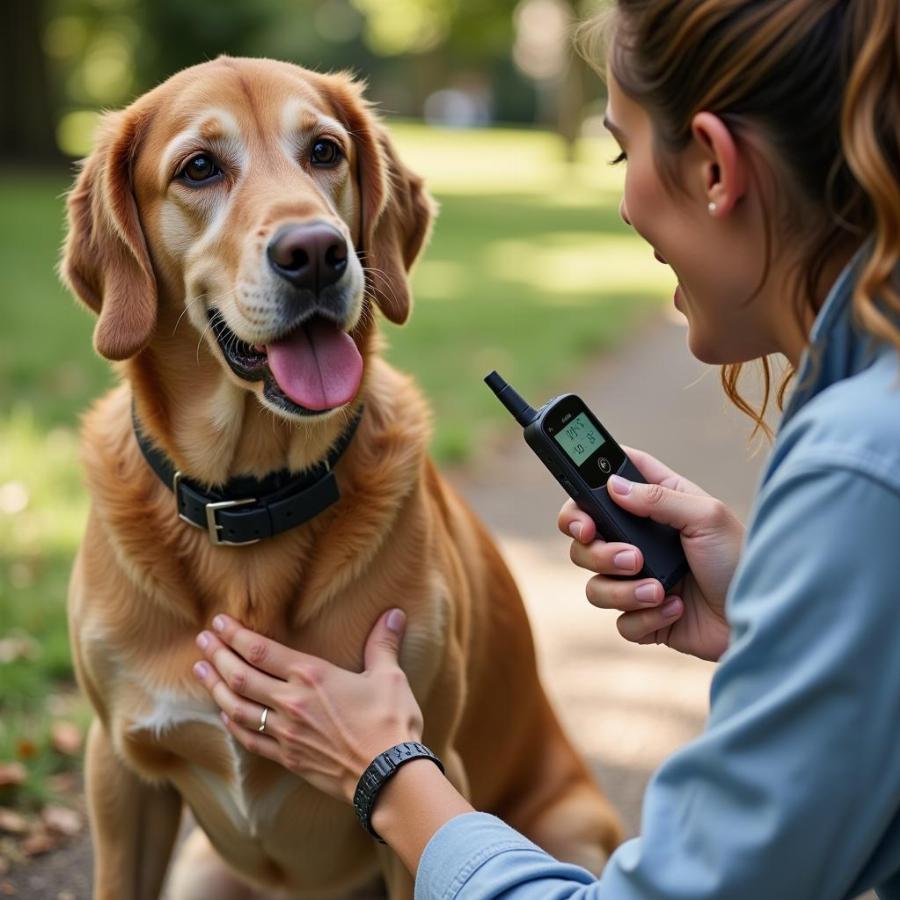Choosing the right collar for any dog is important, but it’s especially crucial for stubborn dogs who tend to pull on the leash or ignore commands. A Petsafe collar, known for its humane and effective training solutions, can be a great asset for owners of strong-willed pups. But with so many options available, how do you find the perfect one for your furry friend? This comprehensive guide will walk you through everything you need to know about Petsafe collars for stubborn dogs, empowering you to make an informed decision that benefits both you and your beloved companion.
Understanding Your Stubborn Dog’s Needs
Before diving into the world of Petsafe collars, it’s essential to understand what makes a dog “stubborn” and what kind of training tools might be most effective. Stubbornness often stems from a dog’s breed characteristics, personality, or lack of consistent training. Some breeds are naturally independent and strong-willed, while others might simply be more interested in sniffing that fascinating patch of grass than following your commands.
Exploring Petsafe Collar Options for Stubborn Dogs
Petsafe offers a range of collars designed to address common behavioral challenges in dogs, including pulling on the leash and ignoring commands. Let’s explore some popular choices:
1. Martingale Collars: These collars are a favorite among owners of stubborn dogs, especially those prone to slipping out of traditional flat collars. Martingale collars tighten gently when a dog pulls, preventing escape while remaining comfortable and humane.
2. Harnesses: If your dog reacts negatively to pressure around the neck, a harness can be a more comfortable option. Harnesses distribute pressure more evenly across the chest and shoulders, reducing strain on the neck. Look for harnesses with front leash attachments, which can help deter pulling.
3. Head Halters: Head halters work by gently redirecting a dog’s head and snout, giving you more control over their movements. While effective, head halters require a gradual introduction and might not be suitable for all dogs.
4. Training Collars: For more persistent pulling or disobedience, you might consider a training collar. Petsafe offers various training collars, including spray collars, vibration collars, and static stimulation collars. It’s crucial to choose a collar with adjustable levels and to use it responsibly and humanely under the guidance of a certified professional dog trainer.
Choosing the Right Size and Fit
Once you’ve determined the type of Petsafe collar that aligns with your dog’s needs and your training approach, it’s essential to select the correct size and fit. A collar that’s too tight can be uncomfortable and potentially harmful, while a loose collar can be ineffective or even dangerous if your dog manages to slip out.
Measuring Your Dog’s Neck: Use a soft measuring tape and measure around the base of your dog’s neck, where the collar would typically sit. Leave enough space for two fingers to fit comfortably between the collar and your dog’s skin.
Adjusting the Collar: Once you’ve put the collar on your dog, adjust the fit according to the manufacturer’s instructions. Ensure the collar is snug but not too tight, and check that you can easily fit two fingers underneath.
Introducing the Collar to Your Stubborn Dog
Patience and positive reinforcement are key when introducing any new training tool to your dog, especially a stubborn one.
Gradual Introduction: Start by letting your dog sniff and investigate the collar before attempting to put it on. Treat them with praise and rewards for their curiosity.
Positive Association: Associate the collar with positive experiences, such as walks, playtime, or treats. This will help your dog view the collar as a good thing rather than a punishment.
Consistency is Key: Once your dog is comfortable wearing the collar, be consistent with its use. Put it on for walks and training sessions, and remember to use positive reinforcement techniques to encourage desired behaviors.
Tips for Success with Petsafe Collars and Stubborn Dogs
-
Consult a Professional: If you’re struggling to choose the right collar or train your stubborn dog, don’t hesitate to seek guidance from a certified professional dog trainer or veterinarian. They can provide personalized recommendations and support based on your dog’s specific needs and your training goals.
-
Start with Basic Obedience: A strong foundation in basic obedience commands like “sit,” “stay,” and “come” is crucial for managing any dog, especially a stubborn one. These commands provide a framework for communication and help establish your role as the leader.
-
Be Patient and Persistent: Remember that training takes time, consistency, and patience. Don’t get discouraged if your stubborn dog doesn’t transform overnight. Celebrate small victories and remain committed to the training process.
 Training a Stubborn Dog with a Petsafe Collar
Training a Stubborn Dog with a Petsafe Collar
Conclusion
Finding the perfect Petsafe collar for your stubborn dog requires careful consideration of your dog’s individual needs, breed characteristics, and your training goals. By understanding the various collar options, choosing the right size and fit, and implementing a gradual and positive training approach, you can effectively manage your dog’s behavior and enjoy a more harmonious relationship with your beloved canine companion.
Do you have more questions about finding the right collar for your furry friend? Contact Beaut Dogs for expert advice and personalized recommendations. Email us at [email protected].**
Beaut Dogs is your go-to resource for all things dog-related, providing reliable and insightful information to help you navigate the joys and challenges of dog ownership. Visit our website today at https://beautdogs.com to learn more!